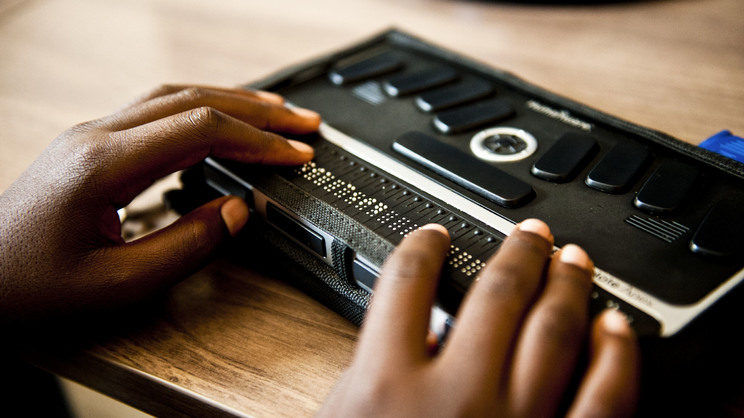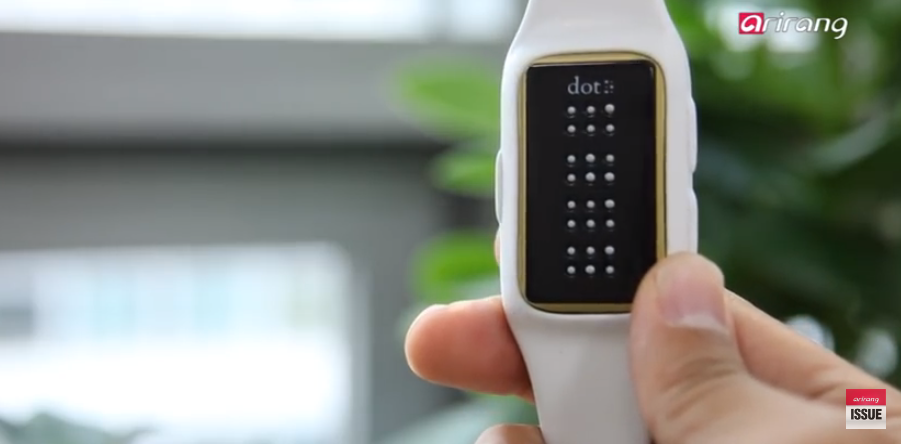Assistive Technology for the Blind: Tools to Transform Lives
Wiki Article
Discover Ingenious Tools Created for the Visually Damaged
The development of cutting-edge tools for the visually impaired represents a substantial improvement in accessibility and independence. Technologies such as smart glasses with AI capabilities and mobile applications made to give auditory descriptions are improving day-to-day experiences for customers.Smart Glasses for Navigating

Smart glasses created for navigating are reinventing the method visually damaged individuals connect with their environment. These sophisticated tools utilize a mix of camera modern technology, fabricated intelligence, and auditory responses to give real-time info regarding surroundings. By using challenge detection systems, wise glasses can inform individuals to prospective threats, enabling safer wheelchair in both acquainted and unfamiliar settings.
The assimilation of GPS technology further boosts navigating abilities, permitting individuals to get acoustic directions as they move. This hands-free approach not just promotes self-reliance but also encourages visually impaired individuals to navigate city landscapes with raised self-confidence. Additionally, numerous clever glasses are equipped with features that identify landmarks and road indications, giving contextual info that boosts the user experience.
In addition, the advancement of these devices is continually advancing, with companies functioning to boost the accuracy of things recognition and broaden the series of navigational functions. As smart glasses come to be a lot more obtainable and budget-friendly, they hold the possible to dramatically change everyday life for visually impaired individuals. Inevitably, these cutting-edge tools stand for a critical step toward inclusivity, offering improved movement and a greater sense of autonomy for people navigating the world around them.

Mobile Application for Daily Living
Just how can mobile applications boost the every day lives of aesthetically impaired individuals? Mobile apps are reinventing the means visually damaged individuals navigate their atmospheres, handle day-to-day tasks, and gain access to information. These applications give crucial assistance through various performances, promoting self-reliance and boosting lifestyle.A number of innovative mobile applications are made especially for daily living. As an example, applications like Be My Eyes connect visually impaired customers with sighted volunteers via video calls, permitting them to get real-time help with jobs such as reviewing tags or browsing unknown spaces. Similarly, Seeing AI, established by Microsoft, makes use of man-made knowledge to define surroundings, reviewed message, and determine items, efficiently transforming a mobile phone right into a powerful tool for everyday help.
Furthermore, navigation applications tailored for the aesthetically damaged, such as Aira and BlindSquare, use audio-based directions and environmental information, enabling users to traverse their environments securely and confidently. Past navigating and instant assistance, mobile apps additionally sustain organization and job management, with attributes that aid customers set tips, produce order of business, and track visits. In recap, mobile applications offer as essential sources, empowering visually impaired people to lead even more independent and meeting lives.
Wearable Technologies for Help
Empowerment via modern technology is progressively obvious in the world of wearable gadgets created to aid aesthetically damaged people. These cutting-edge tools incorporate perfectly into every day life, improving navigation and offering essential feedback to users. As an example, clever glasses outfitted with electronic cameras can identify faces and review message out loud, permitting customers to interact even more confidently in professional and social settings.Another noteworthy development is using haptic comments systems in wearable tools. These systems use vibrations or various other tactile signals to convey details regarding the user's environment, such as challenges or adjustments in terrain, boosting mobility and safety. Wearable innovations likewise include wristbands that attach to smart devices, alerting users to alerts via subtle resonances, thus improving connection without reliance on visual cues.
As these modern technologies continue to progress, they are not only improving independence for aesthetically damaged people but also fostering a greater feeling of incorporation in culture. By linking the void in between obstacles faced in daily living and the possibility for freedom, wearable modern technologies act as critical devices in the quest for equal rights and empowerment for those with aesthetic problems.
Audio Summary Tools
Sound description devices play an essential duty in enhancing availability for aesthetically impaired individuals, providing them with the capability to engage with visual media. Braille displays and notetakers. These devices offer narrated summaries of crucial visual elements in movies, tv programs, and live efficiencies, ensuring that customers can completely comprehend the context and emotions shared via visualsAudio summary can be incorporated right into numerous systems, consisting of streaming solutions, cinema testings, and live cinema. Many prominent streaming solutions now include audio summary as an ease of access function, allowing customers to choose it easily. In addition to conventional media, specialized applications also exist, supplying audio descriptions for art exhibitions, galleries, and other cultural events.
The performance of audio summary hinges on the skill of the narrators, that need to share aesthetic details succinctly without interfering with the original audio. Innovations in this field are additionally leading the way for even more tailored experiences, where users can readjust the degree of detail and pacing according to their preferences.
Braille Innovations and Tools
Braille technologies and devices have dramatically changed the means aesthetically impaired individuals communicate with text and details. Modern innovations have actually led to the development of functional devices that improve proficiency and freedom among customers.
Moreover, mobile Braille notetakers combine conventional Braille input with modern performances, promoting note-taking, scheduling, and document editing and enhancing on the go. Wearable technology for low vision. These compact gadgets frequently include text-to-speech capacities, bridging the void in between Braille and acoustic details
On top of that, ingenious Braille printers have actually emerged, allowing customers to produce Braille labels, records, and academic materials effectively. This accessibility cultivates better involvement in expert and instructional settings, eventually advertising inclusivity.
Furthermore, research study into wise Braille modern technologies continues to increase. Instruments that integrate expert system are being checked out to give real-time navigation assistance and contextual info, improving Smart glasses for the visually impaired the customer experience in diverse settings. Generally, these innovations reflect a dedication to empowering visually impaired people via innovation, ensuring they can quickly access and engage with the world around them.

Final Thought
The innovation of cutting-edge devices for the aesthetically impaired substantially improves independence and lifestyle. Smart glasses, mobile applications, wearable modern technologies, audio summary devices, and Braille developments jointly empower people by supplying crucial navigation help, environmental understanding, and improved analysis experiences. These modern technologies not just foster greater inclusion yet also advertise autonomy in everyday activities, inevitably adding to a more equitable and accessible society for visually impaired people. Continued growth in this area holds assurance for more enhancements.As clever glasses end up being extra available and cost effective, they hold the possible to dramatically change everyday life for visually impaired individuals. Mobile applications are changing the way aesthetically damaged users navigate their atmospheres, take care of daily tasks, and accessibility information. Applications like Be My Eyes connect visually impaired customers with sighted volunteers through video calls, enabling them to receive real-time support with tasks such as reading tags or browsing unfamiliar areas.Additionally, navigation applications customized for the aesthetically damaged, such as Aira and BlindSquare, use audio-based instructions and environmental information, enabling individuals to traverse their environments safely and with confidence.The innovation of ingenious devices for the visually impaired dramatically improves self-reliance and high quality of life.
Report this wiki page